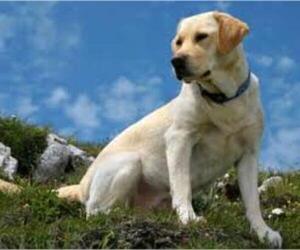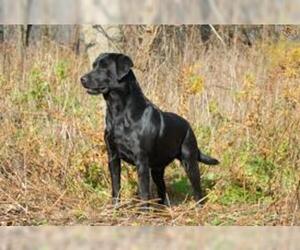
All about Labrador Retriever dog breed
A.K.A. :Lab, Labrador, Labs, Black Lab, Yellow Lab, Chocolate Lab, Fox Red Lab, Dudley Lab, Silver Lab, Charcoal Lab, Polar Bear Lab, British Lab, American Lab, English Lab, Retriever Lab, Duck Dog, Gun Dog, Hunting Dog, Sporting Dog, Water Dog, Family Dog, Service Dog, Guide Dog, Therapy Dog, Assistance Dog, Police Dog, Military Dog, Search and Rescue Dog, Detection Dog, Drug Dog, Bomb Dog, Sniffer Dog, Detection Lab, Working Lab, Show Lab, Field Lab, Pet Lab, Companion Lab, Lapdog, Labby, Labradog, Labpuppy, Labbie
Size
Grooming requirements
Exercise requirements
Good with other dogs
Watchdog ability
Energetic
Training requirements
Playful
Affectionate
Good with other pets
Good with children
Good with strangers
Winter
Summer
Healthiness
Protective
Life Span
| Pure Breeds | Member |
| Breeds A - Z | L |
| Breeds by Group | Gun Dog Sporting |
| Breeds by Trait | Good With Kids High Stamina Dog Breeds Smartest Dog Breeds |
| Overview: | The Labrador Retriever, a beloved and highly popular breed, originated in Newfoundland, Canada, where they were initially bred to assist fishermen by retrieving nets and stray fish. Physically, they are medium-to-large dogs, known for their strong, athletic build, short, dense, weather-resistant double coat (commonly seen in black, yellow, or chocolate), and their distinctive "otter" tail. Temperamentally, Labs are celebrated for their friendly, outgoing, and good-natured disposition, making them exceptional family companions. Their intelligence and eagerness to please contribute to their trainability, though they do require consistent exercise to prevent boredom and destructive behaviors. While adaptable, their energy levels make them more suited to homes with yards, or highly active families, rather than apartment living, unless daily extensive exercise is guaranteed. Regarding health, Labs can be prone to certain conditions like hip and elbow dysplasia, and some eye conditions, so responsible breeding practices are crucial. Overall, their loyalty, versatility, and affectionate nature firmly establish the Labrador Retriever as a wonderful addition to many households. |
F.A.Q.
All You Need to Know About the Labrador Retriever Breed
The Labrador Retriever, a beloved breed originating from Newfoundland, Canada, is renowned for its friendly and outgoing temperament. These medium-to-large dogs boast a sturdy build, a distinctive "otter" tail, and a short, dense, water-resistant coat, typically black, yellow, or chocolate. Labs are incredibly intelligent and eager to please, making them highly trainable and excellent companions for families with children and other pets. While adaptable, their energetic nature means they thrive with ample exercise and are generally not suited for small apartment living without significant daily outdoor activity. Grooming is minimal, requiring only weekly brushing to manage shedding. Potential owners should be aware of common health issues like hip and elbow dysplasia, and progressive retinal atrophy. Overall, a Labrador Retriever is a loyal, loving, and active addition to any home.The average weight of a Labrador Retriever is between 55 and 80 pounds. This is considered a healthy weight for Labrador Retriever adults. There is some variation in Labrador Retriever weight based on sex:
- Males: Typically weigh between 65 and 80 pounds.
- Females: Generally weigh between 55 and 70 pounds.
Labrador Retriever Height: How Tall Is a Labrador Retriever?
Curious about the typical Labrador Retriever height? You've come to the right place! We understand that knowing the average size of a breed is important when considering a new family member. Labrador Retrievers are a medium-to-large breed, known for their sturdy and athletic build.The average height of a Labrador Retriever, measured at the shoulder (or withers), typically falls within the range of 21.5 to 24.5 inches. This measurement provides a good indication of their stature.- Males (Dogs): Generally, male Labrador Retrievers are slightly taller, standing between 22.5 to 24.5 inches at the shoulder.
- Females (Bitches): Female Labradors tend to be a little shorter, with an average height ranging from 21.5 to 23.5 inches at the shoulder.
Labrador Retriever colors primarily include three AKC recognized Labrador Retriever colors: Black, Yellow (ranging from light cream to fox red), and Chocolate. These are the only colors accepted by major kennel clubs like the AKC.Beyond the standard, rare coat types and exotic Labrador Retriever variations exist due to recessive genes or crossbreeding, but are not recognized by the AKC. These include Silver (a dilute chocolate, often controversial and sometimes marketed as a unique color), Charcoal (a dilute black), and Champagne (a dilute yellow). Less common variations, often due to mixed heritage or specific breeding, include Blue (or Gray), Lilac (a dilute chocolate with a gray hue), and Merle. While some breeders may offer these rare Labrador Retriever colors at a premium, it's important to note they do not meet breed standards for purebred Labrador Retrievers. Potential adopters should be aware that pricing for these non-standard colors can vary significantly.
The Labrador Retriever personality is renowned for its friendly, outgoing, and good-natured temperament. These dogs are exceptionally loyal companions, forming strong bonds with their families. They are highly sociable, thriving on interaction and generally welcoming to strangers. Labs are known for their trainability and eagerness to please, making them suitable for various roles. While adaptable, they are not ideal for apartment living without significant daily exercise due to their energetic nature. Their gentle and patient disposition makes them wonderful with children, and they typically get along very well with other pets. Overall, the temperament of the Labrador Retriever is characterized by a playful spirit, unwavering devotion, and a generally happy demeanor, making them beloved family members.
The Labrador Retriever temperament is widely celebrated, making them one of the most popular companion dogs. They are renowned for their friendly and outgoing nature, exhibiting a strong desire to please their owners. Labs are exceptionally sociable, thriving on interaction with people and generally getting along well with other animals.
They are incredibly loyal and form strong bonds with their families, often described as “people pleasers.” This breed is excellent with children, known for their patience and gentle demeanor, making them fantastic family pets. Similarly, their amicable nature extends to other pets, often coexisting peacefully with cats and other dogs, especially when socialized from a young age.While Labs are adaptable, they are generally not ideal for apartment living due to their energy levels and need for regular exercise. They are happiest with a yard and an active family. Though typically eager to learn, they can sometimes display a touch of stubbornness, requiring consistent and positive reinforcement in training. They are not overly sensitive but do respond best to kind and encouraging methods rather than harsh corrections.Overall, the Labrador Retriever boasts a joyful, good-natured, and devoted personality, embodying the ideal qualities of a loving and active family companion dog behavior.Labrador Retriever Care: Your Guide to a Healthy, Happy CompanionUnderstanding Labrador Retriever care is crucial for this popular breed. While generally robust, they have specific needs for optimal well-being.Grooming Needs: Labrador Retrievers have a dense, double coat that requires daily maintenance during shedding seasons (typically twice a year) and weekly brushing otherwise. This helps manage shedding and keeps their coat healthy. Regular nail trims are essential to prevent overgrowth and discomfort.Exercise Requirements: Despite their friendly demeanor, Labradors are energetic dogs and are not a "low-energy dog breed." They require a minimum of 60-90 minutes of vigorous exercise daily, which can include brisk walks, running, swimming, or playing fetch. Mental stimulation through training and puzzle toys is also vital to prevent boredom and destructive behaviors.Dietary Considerations: How to care for a Labrador Retriever nutritionally involves a high-quality, balanced diet appropriate for their age, activity level, and weight. Labs are prone to weight gain, so portion control and avoiding excessive treats are paramount for weight management. Consult your veterinarian for specific dietary recommendations.Wrinkle and Ear Cleaning: Labradors do not have the pronounced wrinkles of some breeds, but regular checks of their lips and chin are good practice. Their floppy ears are susceptible to infections, so routine ear cleaning (1-2 times a month, or more if they swim frequently) is essential to prevent moisture buildup and bacterial growth. Use a veterinarian-approved ear cleaner.Climate Sensitivity: It's important to note that Labradors are NOT brachycephalic; their well-formed muzzles allow for efficient breathing. However, their dense coat can make them sensitive to extreme heat. Always provide ample shade and fresh water during warm weather and avoid strenuous exercise during the hottest parts of the day. They tolerate cold well due to their double coat but still need shelter.Common Health Concerns: Health tips for Labrador Retriever owners include awareness of common issues. They are predisposed to hip and elbow dysplasia, certain eye conditions, and heart problems. Regular veterinary check-ups are key for early detection and management. Skin issues (allergies, hot spots) and dental care (daily brushing to prevent tartar buildup and gum disease) are also important. Consistent weight management is critical to prevent strain on joints and other health complications.
Labrador Retriever Activity Level: How Active Are Labs?
Labrador Retrievers are a moderately to highly active breed, requiring regular exercise to stay healthy and happy. They possess a fantastic balance, capable of intense bursts of energy followed by long periods of rest. Typical Energy Levels & Exercise Needs: Labs typically have high energy levels as puppies and young adults, which gradually mellow with age. They need at least 60-90 minutes of dedicated exercise daily, ideally broken into two or more sessions. This isn't just a leisurely walk; it should include activities that allow them to run, fetch, and use their excellent retrieving instincts. Think brisk walks, jogging, swimming (which they usually adore!), or playing fetch in a secure area. Without adequate exercise, Labs can become bored, destructive, or even overweight.Playtime Preferences: Labs love to play! Their favorite activities often involve retrieving, whether it's a ball, a frisbee, or a stick. They also enjoy puzzle toys that challenge their minds. Their friendly and eager-to-please nature makes them excellent partners for various dog sports like agility, obedience, and dock diving.Limitations & Brachycephalic Anatomy (Important Note): While Labs are often described as having a "stocky" or "sturdy" build, they are NOT a brachycephalic breed. The term "brachycephalic" refers to breeds with shortened snouts (like Bulldogs or Pugs), which can have significant breathing difficulties, especially in heat or during strenuous exercise. Labrador Retrievers have a well-proportioned muzzle, allowing them to breathe freely. Therefore, their exercise limitations are typically related to individual health, age, or extreme weather conditions (e.g., very hot and humid weather, where any dog can overheat). Always monitor your Lab for signs of overheating during exercise, regardless of their breed, and ensure they have access to fresh water.Suitability for Households: Given their moderate to high Labrador Retriever activity level and need for engagement, Labs are best suited for active families or individuals who are committed to providing consistent daily exercise and mental stimulation. They thrive in homes where they are an integrated part of family life and get to participate in outdoor activities. While they enjoy their rest time, they are generally NOT suitable for low-energy households or those who cannot commit to their significant exercise needs. They are intelligent and trainable, making them wonderful companions for those who can meet their activity requirements.Breed Breakdown: What Experts Say About the Labrador Retriever
I'd rate the "Size" trait of the Labrador Retriever at a 7.Labrador Retrievers are considered medium to large-sized dogs. On average, males stand between 22.5 to 24.5 inches tall and weigh 65 to 80 pounds, while females are slightly smaller at 21.5 to 23.5 inches and 55 to 70 pounds. Their body structure is athletic and robust, built for strength and endurance rather than delicate agility. When compared to the full spectrum of companion dogs, from tiny Chihuahuas to massive Great Danes, the Labrador falls squarely into the larger end of the spectrum, though not reaching the colossal size of true giant breeds. Their substantial build and need for space mean they are generally not ideally suited for apartment living without significant daily outdoor exercise and a very tolerant owner. While they can travel, their size makes them less convenient than smaller breeds for airline cabins or cramped car spaces, often requiring larger crates or dedicated vehicle space. Households with significant space constraints, both indoors and outdoors, might find a Labrador's size and energy levels challenging to accommodate comfortably.
I would rate the Labrador Retriever's grooming requirements as a 3 out of 10.Labradors are a relatively low-maintenance breed when it comes to grooming. Their short, dense, double coat is naturally water-resistant and doesn't tangle easily, meaning daily brushing isn't usually necessary, though a weekly brush helps manage shedding and keep their coat healthy. While they are known for shedding, especially during seasonal changes, this is generally manageable with regular brushing rather than requiring specialized deshedding treatments. They don't have extensive skin folds that require meticulous cleaning, and their ears, while needing regular checks and cleaning to prevent infections common in drop-eared breeds, aren't exceptionally problematic. Nail trimming is standard for any dog, and bathing is only needed when they are visibly dirty, not as a frequent necessity for coat health. They can be susceptible to some skin issues or allergies, but these are often dietary or environmental and not directly linked to their grooming needs in the way that, say, a breed with a very long or curly coat might require specialized products or frequent grooming to prevent matting and skin irritation. Overall, compared to many other companion dogs, Labs are quite easy to care for and don't require frequent or specialized grooming, primarily needing basic maintenance.
I would rate the Labrador Retriever's exercise requirements as an 8 out of 10.Labrador Retrievers possess a very high energy level and are bred for active roles, historically as retrieving gun dogs. They thrive on substantial daily activity, typically needing at least 1-2 hours of vigorous exercise. This can include long walks, runs, swimming (which they absolutely adore), fetching games, or more structured activities like agility and obedience training. Their tolerance for sustained movement is excellent, and they have no respiratory limitations due to brachycephalic anatomy, allowing them to engage in prolonged physical exertion. Without adequate exercise, Labradors are prone to boredom, destructive behaviors, and weight gain. They require structured routines to stay mentally stimulated and physically healthy, and simply pottering around the yard won't suffice. They are truly happiest when they have a job to do and an outlet for their abundant energy.
I would rate the Labrador Retriever's watchdog ability as a 5 out of 10.Labradors possess a moderate level of alertness and will typically react to unusual sounds or the presence of unfamiliar people on their property. Their barking behavior tends to be more of an alarm or announcement rather than a continuous, aggressive deterrent. While they have some territorial instincts, they are generally friendly and people-oriented, which often overrides a strong protective drive. They will certainly bark to signal an intrusion, providing a meaningful early warning that something is amiss. However, their willingness to actively deter an intruder is limited. They are more likely to greet or investigate with curiosity than to aggressively confront. Therefore, while they are excellent at providing an alert and will certainly make their presence known, they are not primarily bred for or naturally inclined towards the vigilant, deterrent role of a traditional household watchdog. They are more of a passive early warning system and a friendly companion than a formidable guard.
I would rate the Labrador Retriever's "Good with Other Dogs" trait a 9 out of 10.Labrador Retrievers are renowned for their generally amiable and tolerant nature, which extends significantly to other canines. Typically, they are highly sociable and eager to interact, often approaching unfamiliar dogs with a wagging tail and an invitation to play. Their playful disposition and relatively low aggression drive make them compatible with a wide range of dog sizes and energy levels, from tiny terriers to larger breeds. While early socialization is beneficial for any dog, Labs tend to take to it naturally, thriving in canine company and often seeking out interactions. They are known for their adaptability in multi-dog households, usually integrating well and demonstrating a willingness to share resources and space. Instances of dominance or aggression are rare in the breed and, when they occur, are more often linked to insufficient socialization, lack of appropriate training, or individual temperament rather than an inherent breed trait. They genuinely enjoy the companionship of other dogs and generally coexist peacefully, often forming strong bonds with their canine housemates.
I'd rate the "Energetic" trait of the Labrador Retriever at an 8 out of 10.Labrador Retrievers are a distinctly high-energy breed. They possess a natural athleticism and an insatiable desire to be active, stemming from their history as working dogs. Their typical activity level is very high; they thrive on regular, vigorous exercise and can play for extended periods without tiring. Their endurance is excellent, allowing them to participate enthusiastically in long walks, runs, swimming, and various dog sports. They are incredibly playful, often maintaining a puppy-like exuberance well into adulthood. Consequently, their need for physical stimulation is significant; without it, they can become bored and develop destructive behaviors. They excel in outdoor and athletic activities, making fantastic companions for hiking, fetching, and retrieving games.Compared to many other companion dogs, the Labrador is naturally very active and far from laid-back, especially in their younger years. While they do enjoy cuddling on the couch after a good workout, their default mode is "on." It's important to note that the Labrador Retriever is not a brachycephalic breed. They have a well-proportioned muzzle and open nostrils, which means their anatomy does not negatively affect their stamina or exercise tolerance in the way it would for a brachycephalic dog like a Pug or Bulldog. In fact, their excellent respiratory capacity contributes to their impressive endurance and ability to sustain high levels of activity.
I would rate the Labrador Retriever's "Training Requirements" at a 3 out of 10. They are generally very easy to train and are highly regarded for their intelligence, eagerness to please, and strong desire to work with their human companions. Labs possess a good attention span, are highly responsive to commands, and thrive on positive reinforcement, which they readily embrace. While they do require consistency, this is more to solidify good habits than to overcome stubbornness, as they typically lack the independent streak found in some other breeds. Their trainability makes them exceptionally beginner-friendly and they generally do very well with structured routines, though their inherent enthusiasm can sometimes require gentle guidance to maintain focus.
I would rate the Labrador Retriever's "Playful" trait a 9 out of 10.Labrador Retrievers are renowned for their incredibly high energy levels and their profound love for games and interaction. They are naturally spirited and possess an almost insatiable desire for playtime, readily engaging with toys, other dogs, and especially their human companions. Their attention-seeking behavior often manifests as nudging, tail-wags, and bringing toys for a game of fetch, which they could happily play for hours. Their overall enthusiasm in daily life is palpable, often expressed through an exuberant greeting and a readiness to participate in any activity, making them exceptionally fun-loving compared to many other companion breeds. While they can have their calm moments, their default setting is often one of joyful activity.
I would rate the "Affectionate" trait of the Labrador Retriever at a resounding 10. Labrador Retrievers are the epitome of loving and people-oriented dogs. Their desire for human companionship is incredibly strong; they truly thrive on being an integral part of the family. You'll find them constantly seeking physical closeness, whether it's a gentle lean, a happy cuddle on the couch, or even attempting to be a lapdog despite their size. Their loyalty is unwavering, and they are remarkably sensitive to their owner's emotions, often offering comfort with a nudge or a gentle gaze. The "shadow" phenomenon is very real with Labs – they will happily follow their family members from room to room, preferring to be in the same space. This breed unequivocally thrives on affection and connection; they are far from independent and genuinely suffer if left alone for extended periods without human interaction.
I would rate the Labrador Retriever's "Good with Other Pets" trait as a 9 out of 10.Labrador Retrievers are renowned for their generally friendly and adaptable nature, which extends to their interactions with other animals. They typically exhibit low levels of resource guarding, especially with proper early socialization. While they do possess a moderate prey drive (being retrievers, after all), it's usually directed towards retrieving objects rather than actively hunting smaller household pets. Most Labs are naturally sociable and, with appropriate introductions and continued positive reinforcement, can coexist peacefully and even form strong bonds with other dogs and cats. They thrive in multi-pet households and are often seen playing or cuddling with their animal companions. While socialization and training are always beneficial for any breed to ensure harmonious cohabitation, the Labrador Retriever's inherent good temperament significantly contributes to their high success rate in being extremely pet-friendly.
The Labrador Retriever rates a 9 out of 10 for "Good with Children."Labrador Retrievers are renowned for their exceptionally child-friendly nature. Their temperament is a perfect blend of gentle affection, boundless patience, and enthusiastic playfulness, making them an ideal companion for children of all ages. They are naturally tolerant of noise and the often clumsy handling that comes with young children, rarely reacting with anything more than a gentle nudge or a wagging tail. Their robust build also means they can withstand the playful roughhousing of older children without injury. Labs are inherently good-natured and affectionate, readily forming strong bonds with all family members, including the youngest. While basic obedience training is always beneficial for any dog, the Labrador's natural inclination is to be a loving and cooperative family member, requiring less specific "child-proofing" training than many other breeds. They thrive on being involved in family activities and are always up for a game of fetch or a walk, making them perfect partners for energetic kids. Occasional supervision is always wise with any dog and child, but the Labrador's innate gentleness and high tolerance make them remarkably safe and enjoyable companions for a bustling family home.
Rating the "Good with Strangers" trait of the Labrador Retriever breed is a solid 9 out of 10. Labrador Retrievers are famously, almost notoriously, sociable and welcoming. Their typical behavior around unfamiliar adults is overwhelmingly friendly and often effusive, characterized by wagging tails, enthusiastic greetings, and an eagerness to solicit attention. They have strong natural socialization tendencies, generally viewing new people as potential playmates or sources of affection rather than threats. While they might offer a few "happy barks" upon a stranger's arrival, guarding behavior is rare and goes against their inherent nature. They are remarkably adaptable in public or guest-filled environments, usually thriving on the increased attention and stimulation. This breed is naturally outgoing; while proper socialization always benefits any dog, a Labrador typically requires very little specific training to be comfortable with strangers – it's practically hardwired into their DNA.
I would rate the Labrador Retriever's "Winter" tolerance at a 7.Labrador Retrievers possess a thick, dense double coat that provides a good degree of insulation, and their generally robust build and moderate body fat contribute to their ability to withstand colder temperatures. Their size is also advantageous, as larger dogs tend to retain heat more effectively than smaller breeds. Furthermore, their mesocephalic (well-proportioned) skull structure means they don't face the respiratory difficulties in cold weather that brachycephalic breeds might. They are energetic and enjoy being outdoors, and a healthy Lab can happily participate in outdoor activities like walks, hikes, and even retrieving in snow for extended periods.However, while resilient, they are not immune to the cold. They are still susceptible to hypothermia if exposed to extreme cold for too long, especially if wet, inactive, or older/very young. Their paws can also be sensitive to ice and salt. Therefore, compared to other companion dogs, Labs generally require less specialized winter care than thin-coated or toy breeds, but they are not as impervious to cold as true arctic breeds like Huskies or Malamutes. Owners should still provide adequate shelter, be mindful of prolonged exposure in very harsh conditions, consider paw protection in icy environments, and ensure they are dried thoroughly after being wet in the cold.
I would rate the Labrador Retriever's "summer" tolerance as a 4.While not as sensitive to heat as brachycephalic breeds, Labradors are still quite susceptible to overheating. They possess a dense double coat designed to provide insulation in colder water, which, while offering some protection from UV rays, effectively traps heat in warm weather. They are not brachycephalic, which is a significant advantage over breeds like Pugs or Bulldogs, allowing for more efficient panting. However, their active and playful nature often leads them to overexert themselves in the heat, increasing their risk of heatstroke. Their ability to regulate body temperature is average for a mesocephalic breed, but their enthusiasm can easily override their natural cooling mechanisms. Outdoor activity levels must be significantly curtailed during hot weather, especially during peak daytime hours, and they absolutely require access to shade, fresh water, and cool indoor environments. Compared to many other companion dogs, particularly those with thinner coats or naturally lower energy levels, Labradors require special care in summer months, including strict monitoring of activity, avoiding exercise during the hottest parts of the day, and proactive measures to keep them cool to prevent heat-related illnesses.
I would rate the Labrador Retriever's "Healthiness" trait as a 7 out of 10.Labrador Retrievers are generally robust and resilient dogs, known for their friendly disposition and active nature. Their life expectancy typically ranges from 10 to 12 years, which is a respectable average for a large breed. However, they are not without their breed-specific health predispositions, which prevent a higher score. They are notably prone to certain orthopedic issues, particularly hip and elbow dysplasia, as well as patellar luxation. Eye conditions like progressive retinal atrophy (PRA) and cataracts are also seen. While not a "brachycephalic" breed with inherent breathing difficulties, they can be prone to obesity if not managed carefully, which exacerbates joint problems and can lead to other health issues like diabetes. Skin allergies and ear infections can also be concerns. Responsible breeding practices, including genetic screening of parent dogs for these inheritable conditions, significantly mitigate the risk of these problems in offspring. When well-cared for with appropriate diet, exercise, and preventive veterinary care, Labradors are generally healthy and do not require excessive "high-maintenance" care in terms of their health compared to some other companion dogs, though their energy levels do demand consistent activity.
I would rate the Labrador Retriever's "Protective" trait as a 3 out of 10.While Labs are incredibly loyal and devoted to their families, and their alertness means they'll often bark at unfamiliar sounds or people approaching the house, their inherent friendly and gregarious nature significantly limits their protective capabilities. They are far more likely to greet a stranger with a wagging tail and an offer of a slobbery kiss than to exhibit territorial aggression or a strong defensive instinct. While their size might be a deterrent to some, they lack the natural suspicion and guarding instincts essential for a truly protective dog. They are unequivocally companion dogs and excel in that role, offering emotional support and boundless affection, but they are not suitable as a watchdog or a guard dog capable of offering meaningful physical protection in a household setting.
I would rate the Labrador Retriever's "Life Span" trait as a 6.This rating places them in the "average" to slightly-above-average category when compared to other companion dog breeds. Labrador Retrievers typically live between 10 to 12 years, which is a respectable lifespan. While they aren't considered exceptionally long-lived like some smaller breeds, they also don't suffer from a significantly shortened lifespan often seen in some giant breeds. Common health issues that can impact their longevity include hip and elbow dysplasia, which can affect their mobility and quality of life in later years, and certain cancers (like lymphoma and mast cell tumors) that are more prevalent in the breed. Bloat is another serious, acute condition that can be fatal if not treated quickly. However, responsible breeding practices that screen for genetic predispositions to orthopedic problems, along with proper nutrition, exercise, and preventative veterinary care, can significantly contribute to a Labrador's overall health and help them reach the upper end of their life expectancy. They are not considered a short-lived breed, nor are they known for exceptional longevity, making them a solid average in terms of lifespan.
Labrador Retriever Puppies for saleSee all puppies for sale
Labrador Retriever Dogs for adoptionSee all dogs for adoption
Labrador Retriever BreedersSee all breeders
Similar Dog Breeds for Labrador Retriever
Breed Mixes of Labrador Retriever
Quick Breed Selector 0 - not important, 1 - smallest, 10 - largest
Variants & Mistakes :Labrador Retreiver, Labrodor Retriever, Labrabor Retriever, Labradore Retriever, Labradour Retriever, Ladrador Retriever, Labradr Retriever, Labradoor Retriever, Labradot Retriever, Labraddor Retriever, Labrado Retriver, Labradoodle Retriever, Labordor Retriever, Lebrodor Retriever, Labarador Retriever, Labador Retriever, Labrafor Retriever, Labradoe Retriever, Labrodar Retriever, Labraddor Retreiver, Labradore Retreiver, Labradour Retreiver, Labrodor Retreiver, Labrabor Retreiver, Labradr Retreiver, Labradoor Retreiver, Labradot Retreiver, Labradoodle Retreiver, Labordor Retreiver, Lebrodor Retreiver, Labarador Retreiver, Labador Retreiver, Labrafor Retreiver, Labradoe Retreiver, Labrodar Retreiver, Labrodor Retreivr, Labarador Retreivr, Labador Retreivr, Labrafor Retreivr, Labradoe Retreivr, Labrodar Retreivr, Labradr Retreivr, Labradoor Retreivr, Labradot Retreivr, Labraddor Retreivr, Labrado Retrivr, Labradoodle Retrivr





